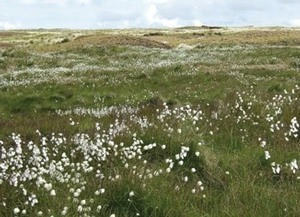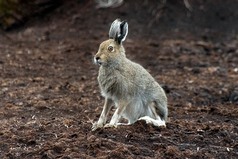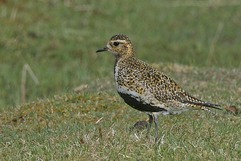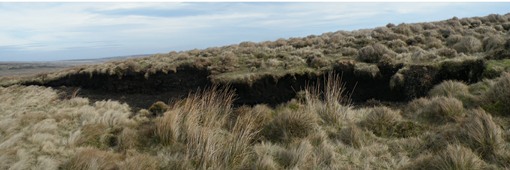

Biodiversity
Action
Plan
Blanket bog’s permanently wet, nutrient-poor habitats, with low vegetation cover, support a wide range of invertebrates which are an important food source for moorland birds.
The wet, acid conditions support a specialised range of plants, with the flushes on the bog margins supporting Bog Asphodel, Sundew and a variety of Sedges. Sphagnum and sedge-dominated areas are particularly significant for more localised and specialist invertebrates.
A mosaic of vegetation and sometimes the presence of heather benefits a range of moorland blanket bog species. Golden Plover and Dunlin as well as other species require shelter, provided by hollows, ridges, and the vegetation itself. Both Golden Plover and Dunlin breed on Blanket Bog, Dunlin nesting around the shallow bog pools.
Blanket bog in good condition on deeper peat, has a high water table -within 10cm of the surface for most of the year, the peat being generally wet at the surface. The range of species will include abundant sphagnum species, cotton grasses and other typical bog species. It does often have some dwarf shrubs, including heather, but these do not dominate. There should be no large scale bare peat surfaces.
Frequent burning or heavy grazing contribute to blanket bog becoming a less species-rich, ‘modified’ blanket bog with a sparse cover of dwarf shrubs and Sphagnum mosses reduced to a few more tolerant species.
Even more damaged and degraded bogs may be dominated by Heather or Purple Moor Grass, and typical bog species may be absent.
Species supported by blanket bog:
Birds: Golden Plover, Dunlin, Curlew, Red Grouse, Snipe, Merlin and Short-eared Owl.
Potential for re-colonisation by Black Grouse, Hen Harrier and Twite.
Mammal: Mountain hare,
……
Reptiles: Common lizard, potentially Adder
Invertebrates: a wide range including crane flies
Plants: The richer form of blanket bog occurs on deeper peat and is dominated by Common and Hare’s Tail Cotton Grass, with Heather, Bilberry, Crowberry and sometimes Cross-leaved Heath.
Wavy hair-grass and rush also occur and locally Purple Moor Grass and Deer Grass.
There is a rich assemblage of bryophytes - mosses and liverworts - with lichens frequently present.
Scarce plants of the bogs include Cloudberry and Labrador Tea, Bog Asphodel, Sundew and a variety of sedges. sphagnum mosses, Bog Asphodel, Cranberry and the Round-leaved Sundew.


Features of blanket bog supporting wildlife species.
Blanket bogs do not support a large diversity of priority or other species, but are important for the species they do support.


Blanket Bog Features